If you want to feel confident that the Federal Reserve knows where it's going as it steers the world's biggest economy, then you probably should not read the transcripts of its 2007 policy meetings.
Those transcripts, released on Friday, show a Fed groping blindly for answers about the early market tremors preceding the financial crisis, while also blithely deciding that everything was probably going to be just fine.
In what may be the most glaring example of the Fed's forecasting failure, its economists declared at the December 2007 policy meeting that the U.S. would avoid a recession, despite a slowdown in housing and turmoil in financial markets that was getting worse all the time. As we now know, the worst recession since the Great Depression began that very same month, according to the National Bureau of Economic Research. In less than a year, the financial system would be on the brink of total collapse.
The Fed didn't see it coming.
"Overall, our forecast could admittedly be read as still painting a pretty benign picture," Fed economist Dave Stockton said in that December meeting. "Despite all the financial turmoil, the economy avoids recession."
But Stockton also knew that some might not take his forecast seriously.
"So I tried not to take it personally," he added, "when I received a notice the other day that the Board had approved more frequent drug-testing for certain members of the senior staff, myself included."
That cracked up the room, according to the transcript. The Huffington Post is still reading through the hundreds of pages of transcripts, but it is not hard to find numerous examples of Fed officials sharing this relatively benign outlook.
Fed policy makers may have felt they had room to relax, given the Fed's year-end forecasts of 1.25 percent GDP growth in 2008 and 2.1 percent growth in 2009. Those are not great numbers, but not the end of the world, either.
Unfortunately, they were way off the mark. Instead, GDP shrank by 0.3 percent in 2008 and 3.1 percent in 2009, adjusted for inflation, the worst two years of GDP since 1945-46.
Even in that December 2007 meeting there were lots of early signs that the Fed's forecasting abilities were suspect. With almost the same breath he'd used to crack his joke about drugs, Stockton admitted that the economic situation was worse than the Fed had expected.
"In particular, the incoming data have been weaker than expected, the projected path of household net worth has been revised down owing to lower prices for both equities and houses, oil prices average about $7 per barrel higher than in our previous forecast, and the brief improvement in financial conditions that we experienced in September and October has been reversed in recent weeks," he said.
Other than that, Mrs. Lincoln, how did you like the play?
To be fair, economic forecasting is hard. Most economists don't do it well, and there is no magic water fountain at the Fed that gives people the ability to see the future any better. Many mainstream observers at the time shared the Fed's sanguine view and ignored the warning signs. But then none of those observers controlled the levers of the U.S. economy.
Earlier in 2007, Fed policy makers were repeatedly reassuring each other that things were going to be fine, despite a sudden meltdown in credit markets, as investors suddenly started to suspect that derivatives stuffed with toxic mortgage assets might not be money-good.
"The good news, of course, is that as time passes, the uncertainty about bank balance sheet pressures and funding requirements should lessen," William Dudley, then a Fed official handling market operations and today the New York Fed President, said in September 2007.
Sure enough, in October 2007, then-New York Fed President Timothy Geithner felt able to declare: "The panic has receded. The disruptions are more contained."
But the panic got worse again almost immediately.
The problem was hiding in plain sight: The toxic mortgage assets on bank balance sheets. It was even identified by Fed Governor Donald Kohn in August 2007: "The primary problem is that no one is quite sure what the value of those assets is."
Despite this uncertainty, Fed officials had no problem making pronouncements about the health of banks. In August 2007, for example, Dudley said of subprime-mortgage factory Countrywide Financial: "The good news about Countrywide is that people view them as having a strong franchise."
Less than a year later, Countrywide, now recognized as among the worst mortgage lenders of the era, was bought in a fire sale by Bank of America. The toxic mortgages BofA got in the deal haunt it to this very day.
But Fed officials did sometimes acknowledge the possibility that things could be significantly worse than they expected.
"Whether you use Greg Ip to rewrite the history or you rewrite it yourself, no amount of rewriting of history will exonerate us if we are not prepared for the more-dire scenarios that were presented by the staff," Dallas Fed President Richard Fisher told Fed Chairman Ben Bernanke in August 2007. Ip, now with the Economist, was the Wall Street Journal's Fed reporter at the time. "I would ask that we do some scenario preparation in terms of, should we encounter increased financial market turbulence,
what actions we might take to deal with it."
Bernanke assured Fisher that the Fed was "quite attuned to these issues."
Update: To his credit, Geithner repeatedly expressed anxiety that the Fed might be behind the curve -- although he ultimately came to much the same conclusions as his peers and predicted economic growth would be "modestly below trend," instead of catastrophically horrible. In September 2007, for example, he wondered if the Fed was acting aggressively enough to help the economy and markets. The Fed decided to cut its target for the fed funds rate, its key policy tool, by half a percentage point at that meeting. At the next meeting, Geithner wondered how bad the credit crunch was going to be. Stockton reassured him that the Fed was "not forecasting a deep credit crunch."
During this time, San Francisco Fed President Janet Yellen and Boston Fed President Eric Rosengren became the Fed's Coalition of the Pessimistic. In December, Yellen, who is now the Fed Vice Chairman, warned: "The possibilities of a credit crunch developing and of the economy slipping into a recession seem all too real.” Rosengren followed up by saying "I think I took the same pessimism pill as President Yellen this morning."
(h/t Wonkblog)
-- Eleazar David Melendez, Emily Peck and Maxwell Strachan contributed reporting to this story.
